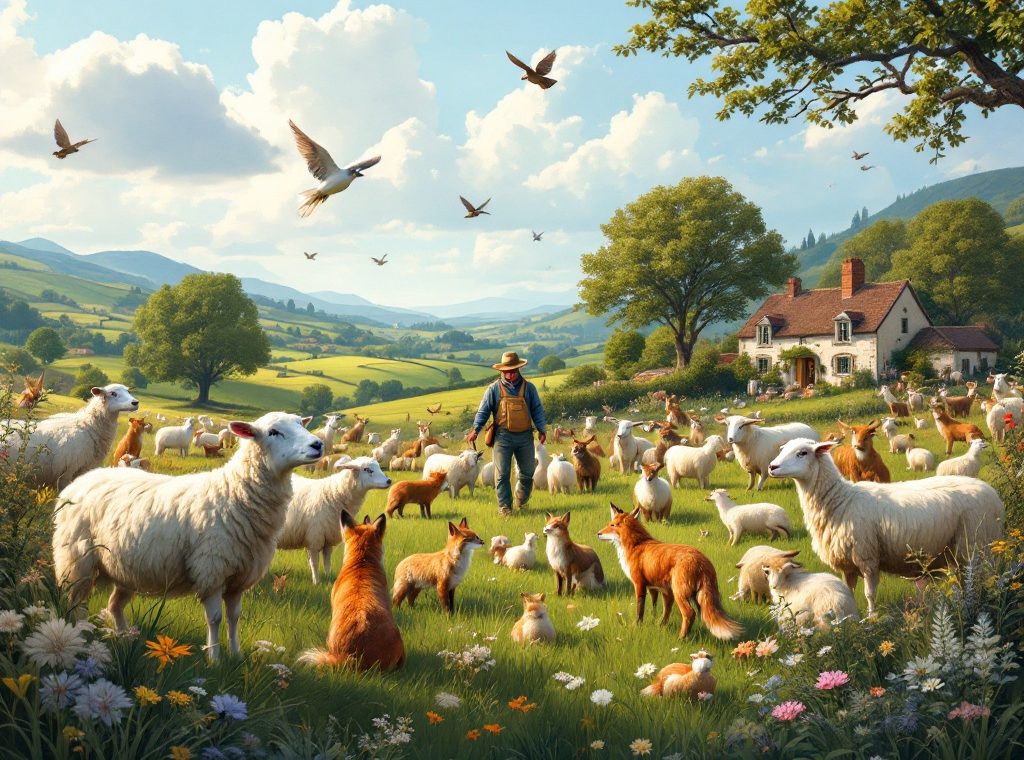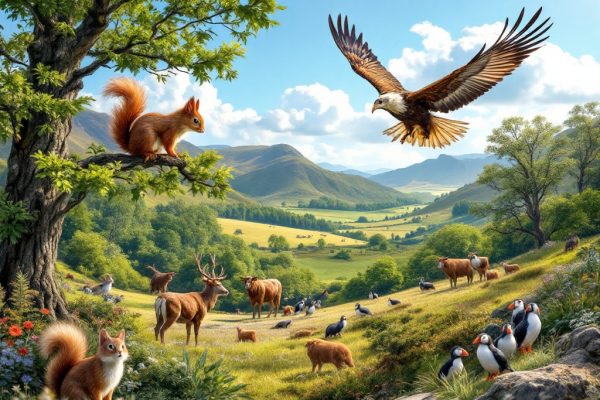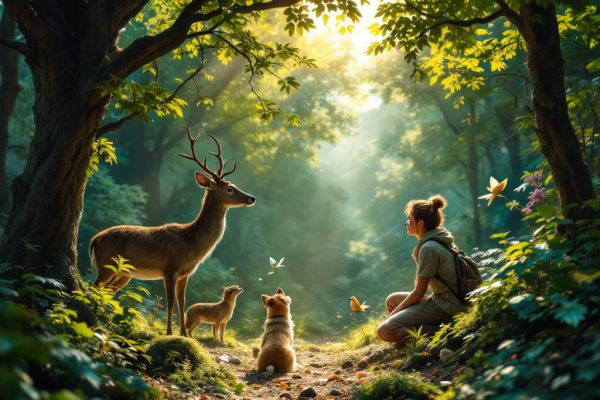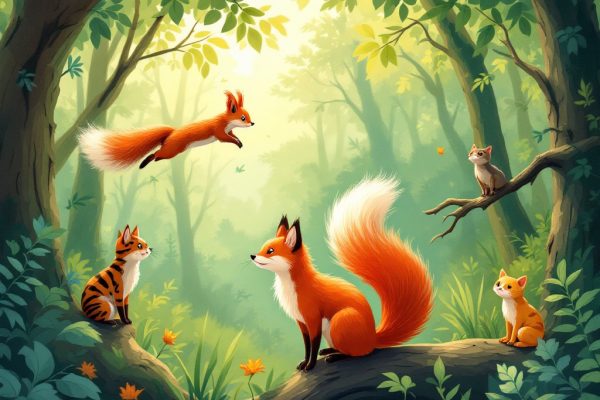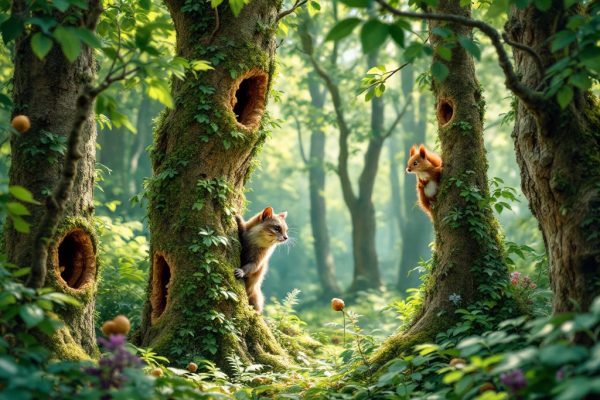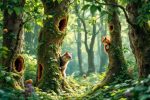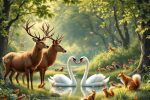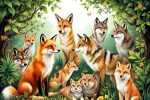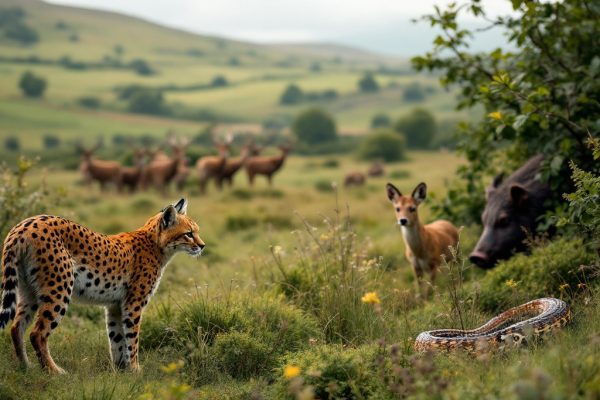What Lothian Wild Animals Can Be Domesticated?
Discover the fascinating world of animal domestication in Lothian! From familiar farm animals to the surprising potential of local wildlife like foxes and birds, explore how humans and animals have evolved together. Learn about the genetic and behavioral changes that occur during domestication, the challenges and ethical considerations involved, and the surprising impact of urbanization on this ancient practice. Delve into the legal aspects of keeping wildlife, the rising trend of exotic pets, and the unique opportunities for domestication in urban Lothian. Start your journey into the intriguing relationship between humans and animals today!
Important information
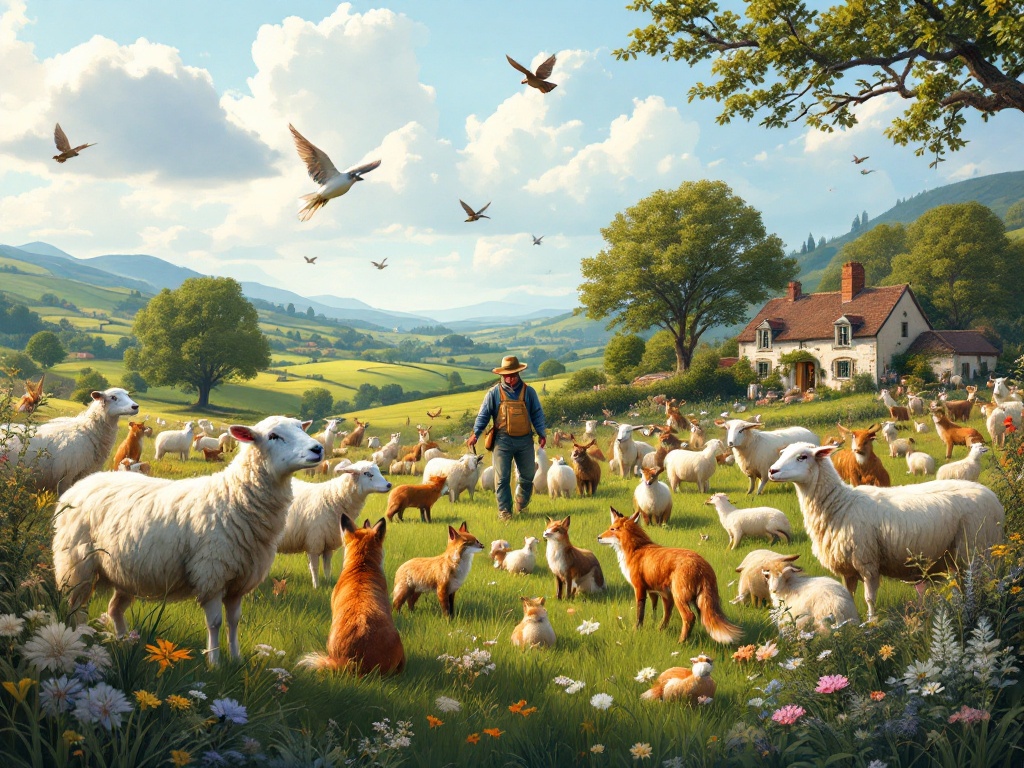
- Domestication is a continuous process, changing both animal genetics and behavior, making them more comfortable with humans.
- Lothian has various wild animals with domestication potential, including foxes, birds, and small mammals, but laws regulate this practice.
- Pigeons and red foxes in Lothian show early signs of domestication, adapting to human influence in their diet and behavior.
- Domesticating Lothian wildlife faces challenges like aggression, specialized diets, and ethical considerations.
- Urbanization impacts domestication by altering habitats and increasing human-animal interaction, creating both challenges and opportunities.
Introduction to Domestication of Lothian Wild Animals
For millennia, humans have domesticated wild animals, significantly altering them in the process. These animals adapt to human controlled environments.
Understanding the Domestication Process
Domestication is an ongoing process, an evolving relationship between humans and animals. This interaction gradually transforms animals, distinguishing them from their wild ancestors. It’s not a destination, but a spectrum. Dogs and cattle represent the fully domesticated end. Other species are only partially domesticated. Many remain entirely wild.
Genetic and Behavioral Changes in Domestication
Domestication significantly alters animals, impacting their genetics and behavior. For example, changes in coat color and breeding cycles are frequently observed. Most notably, domesticated animals become considerably tamer, showing less fear of humans and greater tolerance towards each other. These transformations arise from human intervention through selective breeding and the animals’ adaptation to human presence. This combination of artificial and natural selection drives the domestication process.
Wild Animals in Lothian: Potential for Domestication
Lothian’s diverse wildlife includes animals like foxes, rabbits, and birds, some of which have domestication potential. Domesticated sheep, goats, and pigs are already present on existing farms. Successful domestication hinges on factors such as temperament, breeding history, and adaptability to human environments. Animals with an innate affinity for humans and a social nature are ideal candidates. However, Lothian’s wildlife domestication is regulated by laws that protect certain species. Permits are required for capturing or keeping these animals, and pet ownership is also regulated to ensure the safety of both animals and the public.
Species Suitable for Domestication
Some Lothian wildlife species, including foxes, certain birds, and small mammals, can be domesticated. These animals are generally calm and sociable, adapting well to human environments. Their dietary needs are relatively easy to meet. However, domestication is not appropriate for all Lothian wildlife. Aggressive or solitary animals, and those with specialized diets, pose considerable challenges. Ethical considerations, such as animal welfare and ecological impact, are crucial and responsible domestication practices are essential.
Examples of Partially Domesticated Species
Lothian’s pigeons and red foxes are exhibiting intriguing signs of domestication. Their behavior has shifted, and their diets have adapted to human influence. This human interaction is even reflected in genetic and physical changes, distinguishing them from their wilder counterparts. These adaptations suggest the creatures are in the early stages of domestication, evolving alongside us.
Challenges in Domestication of Lothian Wildlife
Domesticating Lothian’s wildlife presents various challenges. Some animals display aggression or fear, making living with humans difficult. Others have specialized diets or require vast spaces, unsuitable for homes. An animal’s sociability is key for domestication, but many don’t thrive with human interaction. Legal and ethical concerns add further complexity. Each species also has unique needs. Therefore, taming wildlife is a complex undertaking.
Exotic Pets and Domestication Trends in Lothian
Exotic pets are gaining popularity in Lothian. Popular reptile choices include bearded dragons and snakes. Bird enthusiasts often choose parrots or finches. Small mammals such as chinchillas and degus are also becoming beloved companions.
Impact of Urbanization on Animal Domestication
Urbanization significantly impacts animal domestication by changing habitats and increasing human-animal interactions. This leads to behavioral changes in animals and improves their adaptability to urban settings.
Opportunities for Domestication
Increased human-animal contact in urban areas presents unique opportunities for domestication.
Popular Exotic Pets in Lothian
Lothian residents love exotic pets like rabbits, parakeets, and pigeons. Rabbits are known for their friendly nature and ease of care. The vibrant plumage of parakeets and pigeons, along with their ability to mimic sounds, makes them equally appealing. Generations of captive breeding have successfully adapted these creatures to domestic environments.Beyond these beloved companions, other animals are emerging as potential pets. The silver fox, for instance, is showing great promise due to selective breeding programs that have enhanced their tameness, making them more suitable as companions. This development underscores the ever-evolving dynamic between humans and animals.
Impact of Urbanisation on Animal Domestication
Urbanization dramatically reshapes animal domestication. It transforms natural habitats and shrinks wild animal populations, disrupting traditional practices that once relied on readily available wild species. However, the increased interaction between humans and animals in cities has spurred new forms of domestication, often centered on companionship and specialized roles like pest control. The unique resources available in urban environments also influence which species thrive under human management. For instance, pigeons and rats flourish in cities, demonstrating a remarkable adaptation to urban life. Ultimately, urbanization alters our relationship with animals in ways both predictable and unforeseen.

